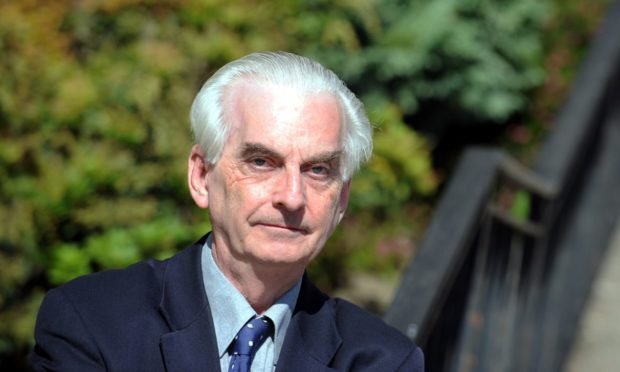A world-leading microbiologist has given the Scottish Government’s new coronavirus measures his backing.
Aberdeen University expert Hugh Pennington has previously been an outspoken critic of the handling of the outbreak in the Central Belt.
But last night the emeritus professor of bacteriology praised First Minister Nicola Sturgeon for “biting the bullet” and announcing the shutdown of the licensed trade in five council areas, including Edinburgh and Glasgow.
Prof Pennington said he would expect the measures, which also include the ban of alcohol sales at indoor venues across the whole of Scotland, will have “a reasonable impact” in the coming weeks.
But his positivity came with some reservations, having called for the closure of the Glasgow hospitality trade some weeks ago.
“You could say it is a bit late in the day to address it, but it has been done.
“We’ll see how long it takes to work as I’m slightly sceptical that two weeks is enough to tell if it’s taking effect, as it takes a week for the virus to show itself in somebody.
“Three weeks might have been better, which was what was put in place in Aberdeen – and there the outbreak came to an end, it was satisfactorily dealt with and cases numbers came down to quiet small levels.
“But there was an inevitability about it after the figures hit 1,000 a day when at one time they were down in penny numbers – something had to be done.”
The Granite City was put in local lockdown for three weeks in August after a cluster of coronavirus cases were traced through its bars and pubs.
Political opponents have criticised the government for treating this latest large-scale outbreak in the Central Belt differently.
Prof Pennington said: “Currently around 80% of all cases in Scotland are there.
“Will these measures work? The big test is really whether it will work down in the Central Belt because up until now there seems to have been a bit of reluctance to really do much about hospitality, except the closing times – which some, like me, were very sceptical of.
“It hasn’t made very much difference so they have had to be much more strict.
“Glasgow had quite a lot of cases and didn’t really have anything more imposed than the 10pm curfew – the cases have just gone up and up.
“We know if the virus gets into a household it does very well in that setting. There’s no social distancing in the home.
“The problem was stopping the virus getting in in the first place and it didn’t seem to be people going next door – it was people going to pubs and hospitality.
“That was where the virus was moving from one house to another to another.”
Prof Pennington added that he was “fairly surprised” there was not more done to halt travel from the Central Belt to places relatively untouched by the latest outbreaks, such as the Highlands and Islands.
He called for stricter testing regimes at airports and said the warning signs had been missed ahead of bringing hundreds of students from all over to Scotland’s university towns.
